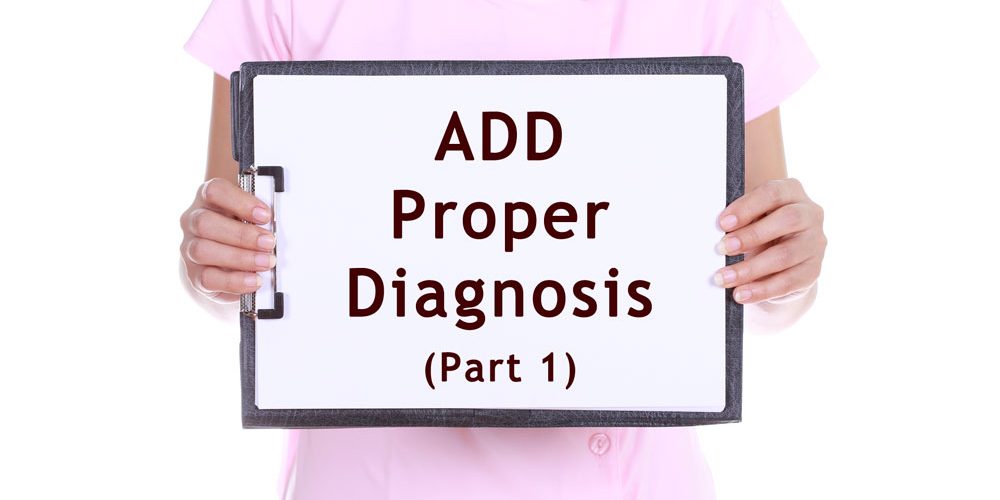By Jerry Morris, PsyD, MsPharm, MBA
MB (Marc Braman, MD, MPH): Our topic this session is Attention Deficit Disorder, proper diagnosis. Dr. Morris, thank you for joining us again.
JM (Jerry Morris, PsyD, MsPharm, MBA): Glad to be here, Marc.
MB: So, we want to get a good handle on properly understanding the cause of what’s going on with a person so we can be effective in treating it. We just talked earlier about the misdiagnostic processes or problems with what many people have been labelled with as Attention Deficit Disorder or ADD. We want to understand what we should experience. Let’s just put this into a practical context. Let’s say, I have a child, maybe they’re 12 to 15 years old, and they’re acting up in school, they’re creating problems at home. The symptoms that myself and/or teachers, or others would say, “Oh, looks like they have ADD.” What should I do? What kind of professional should I see? What kind of test should be done that I can be confident I don’t end up with a child, one of the 75 or 80%, that’s misdiagnosed?”
JM: That’s a good question, Marc, and all probably fathers and mothers should be concerned about this kind of question. We are very lucky in America to have good diagnostic abilities in the specialty of psychology and psychiatry, and in collaborative medicine with general physicians and pediatricians, and these specialists. If we use them, here’s the problem: It requires some significant healthcare coverage to get what the patient needs, it requires cooperation and collaboration among the disciplines, which is variable in some facilities and locales, and it requires some insight about the complexity of the disorder and diagnosing it. For instance, we do have a number of marketed and actually, even public domain short questionnaires, that are called “screeners” that one can use to identify, “Do we need to do more diagnostics?” They’re low validity and reliability, they’re very short for parsimonious use in fast-paced healthcare systems, but people are using those screeners and those short questionnaires as if they’re diagnostic instruments. They’re not because of their reliability, and validity, and their short nature. We only use them to identify, “Do we need to do more diagnostics and workup?”
JM: So one of the big problems is, we’re using screeners inappropriately in medical centers and in some psychological practices. Secondly, we do have some very, very good normative tests for children and adolescent, going clear down to three and four years old. It’s harder to be valid and reliable there but we have them and they’re more extensive. They take more time requirement but they have the advantage over the screener of not only identifying symptoms already that can be involved in ADHD, but, as I’ve said before, they can be involved in a lot of different disorders and they’re not differential. And so these more extensive and normative instruments that compare them to wider and wider populations, and wider and wider diagnosis can do the differential sorting between ADHD and some other mood disorders and developmental disorders. Secondly, ADHD has a substantial body of literature now, to show that it runs in families and that there are certain kinds of family phenomena that can create that and other mood disorder conditions. For instance, the famous ACE studies by our friends on the West Coast have demonstrated what kind of family stressors and compositions. And those physicians have done a good job out there of identifying what can raise the prevalence of mood disorders.
JM: But to make a long story short, we need to use instruments that evaluate the family, that evaluate the child, and can sort out the difference between ADHD and other mood disorders. We’re not doing that now on a consistent basis. We’re rapidly screening and rapidly implementing some medication intervention for these kids and these families, and that’s a shame.
MB: So, there’s a number of areas in healthcare that in general, we, in healthcare, are not following the recommended guidelines for proper diagnosis and treatment. Is this that kind of situation?
Attention Deficit Hyperactivity Disorder: Effectiveness of Treatment in At-Risk Preschoolers; Long-Term Effectiveness in All Ages: and Variability in Prevalence, Diagnosis, and Treatment (2011). Agency for Healthcare Research and Quality U.S. Department of Health and Human Services 540 Gaither Road Rockville, MD 20850 www.ahrq.gov Contract No. MME2202 290-02-0020. AHRQ Publication No. 12-EHC003-EF.
Measuring inappropriate medical diagnosis and treatment in survey data: The case of ADHD among school-age children. Evans WN, Morrill MS, Parente ST. J Health Econ. 2010 Sep;29(5):657-73. doi: 10.1016/j.jhealeco.2010.07.005. Epub 2010 Aug 4.
Trends in the parent-report of health care provider-diagnosed and medicated attention-deficit/hyperactivity disorder: United States, 2003-2011. Visser SN, Danielson ML, Bitsko RH, Holbrook JR, Kogan MD, Ghandour RM, Perou R, Blumberg SJ. J Am Acad Child Adolesc Psychiatry. 2014 Jan;53(1):34-46.e2. doi: 10.1016/j.jaac.2013.09.001. Epub 2013 Nov 21.
The relationship of adverse childhood experiences to adult health: Turning gold into lead. Felitti VJ. Z Psychosom Med Psychother. 2002;48(4):359-69. German.





